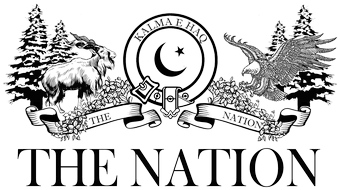مضمون کا ماخذ : roulette
Electrical stimulation patch may replace drugs to cure migraine: study
A wireless patch that uses electrical stimulation to block pain signals to the brain may one day replace drugs for the treatment of migraine, a new study suggests. Dr David Yarnitsky and colleagues recently reported their findings in the journal Neurology. Dr Yarnitsky and colleagues believe that their new electrical stimulation patch could offer a […]
A wireless patch that uses electrical stimulation to block pain signals to the brain may one day replace drugs for the treatment of migraine, a new study suggests.
Dr David Yarnitsky and colleagues recently reported their findings in the journal Neurology. Dr Yarnitsky and colleagues believe that their new electrical stimulation patch could offer a non-drug alternative for people with migraine, after finding that it is just as effective as pain medication.
The Nerivio patch consists of an armband, rubber electrodes, and a chip. The wireless device is connected to a smartphone app. When instructed by the app, the device generates electrical pulses, which stimulate sensory nerves under the skin. This aims to prevent pain signals from reaching the brain.
Shortly after the start of a migraine, each participant was instructed to apply the Nerivio patch or the sham stimulation device to their upper arm. Different levels of stimulation were tested, and each treatment lasted around 20 minutes.
The researchers found that at the three highest levels of stimulation, 64 percent of individuals treated with the Nerivio patch reported a reduction in migraine pain by more than 50 percent in the 2 hours after treatment, compared with just 26 percent of subjects who received the sham treatment.
Additionally, the team found that at the very highest stimulation level, 58 percent of people who started out with moderate to severe migraine said that their pain was mild or had disappeared following Nerivio treatment, compared with only 24 percent of those in the sham treatment group.
According to Dr Yarnitsky, who is also a member of the Medical Advisory Board for Theranica, the Nerivio patch produced results “similar to those seen for the triptan medications for migraine”.
David Yarnitsky said, “These results need to be confirmed with additional studies, but they are exciting. People with migraine are looking for non-drug treatments, and this new device is easy to use, has no side effects and can be conveniently used in work or social settings.”
He points to one limitation of the study, which is that many participants receiving the sham stimulation stopped before the required 20-minute treatment period.
“This may indicate that they knew the stimulation was not active, and thus they were no longer blinded to the study, which is a challenge in any sham stimulation study,” says Dr. Yarnitsky.
Separately, a new study has suggested that symptoms of hay fever could be reduced with a simple probiotic.
First study author Jennifer Dennis, of the Department of Food Science and Human Nutrition at the University of Florida, and colleagues recently reported their findings in the American Journal of Clinical Nutrition.
With this in mind, the researchers set out to determine how a probiotic containing a combination of Lactobacillus gasseri, Bifidobacterium bifidum, and Bifidobacterium longum affects seasonal allergy symptoms and life quality.
The subjects were then randomly allocated to one of two groups. One group was given the combination probiotic in the form of a capsule, to be taken twice daily, while the other group received a placebo.
Participants were not using any other allergy medications during the 8-week study period, and the study took place at the peak of spring allergy season.
Compared with participants who took the placebo, those who took the combination probiotic reported a reduction in allergy symptoms and improvements in quality of life, as determined by weekly telephone surveys. Not all probiotics work for allergies. This one did,” says Dennis.
Subjects with mild seasonal allergies reported the greatest benefits from the combination probiotic, the team reports.
While further studies are needed to pinpoint precisely how the combination probiotic might alleviate symptoms of seasonal allergies, the team hypothesizes that it might be down to an increase in regulatory T cells, which could boost tolerance to such symptoms.
In conclusion to their findings, the researchers state: “Our study demonstrates a potential benefit for healthy adults with self-identified seasonal allergies when the probiotic is administered starting at the greatest level of allergy symptoms.
Future research should focus on the molecular mechanism by which probiotics modulate immune function. If elucidated, this information may lead to a more complete understanding of the role of commensal microorganisms in developing and maintaining immune balance.”












